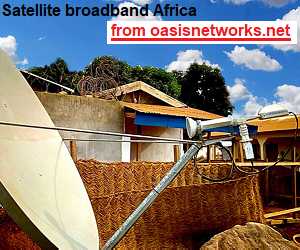| Home Login Register |
| Satellite Internet forum › iDirect Forum: hubs and terminals › iDirect 3000 problem, low RX |
|
Pages: 1
|
iDirect 3000 problem, low RX(Read 6836 times) |
|
eu_pelado23
Member
★★ Offline Posts: 5 Argentina |
Dec 15th, 2011 at 6:49pm
|
| Back to top |
« Last Edit: Dec 16th, 2011 at 12:32am by eu_pelado23 »
IP Logged
|
|
Eric Johnston
Senior Member
★★★ Offline Posts: 2109 |
Reply #1 - Dec 16th, 2011 at 4:49pm
|
| Back to top |
IP Logged
|
|
eu_pelado23
Member
★★ Offline Posts: 5 Argentina |
Reply #2 - Dec 16th, 2011 at 5:46pm
|
| Back to top |
IP Logged
|
|
Eric Johnston
Senior Member
★★★ Offline Posts: 2109 |
Reply #3 - Dec 16th, 2011 at 6:17pm
|
| Back to top |
IP Logged
|
|
eu_pelado23
Member
★★ Offline Posts: 5 Argentina |
Reply #4 - Dec 17th, 2011 at 6:32am
|
| Back to top |
IP Logged
|
|
Eric Johnston
Senior Member
★★★ Offline Posts: 2109 |
Reply #5 - Dec 17th, 2011 at 8:29am
|
| Back to top |
« Last Edit: Dec 17th, 2011 at 1:14pm by Admin1 »
IP Logged
|
|
eu_pelado23
Member
★★ Offline Posts: 5 Argentina |
Reply #6 - Dec 18th, 2011 at 7:47am
|
| Back to top |
IP Logged
|
|
Eric Johnston
Senior Member
★★★ Offline Posts: 2109 |
Reply #7 - Dec 18th, 2011 at 8:30pm
|
| Back to top |
IP Logged
|
|
eu_pelado23
Member
★★ Offline Posts: 5 Argentina |
Reply #8 - Dec 24th, 2011 at 5:13am
|
| Back to top |
IP Logged
|
|
Pages: 1
|
Email me: eric@satsig.net
Powered by YaBB 2.5.2!
YaBB Forum Software © 2000-. All Rights Reserved.
Disclaimer, Terms of Use and Privacy Forum User Agreement Forum rules Cookie policy.


